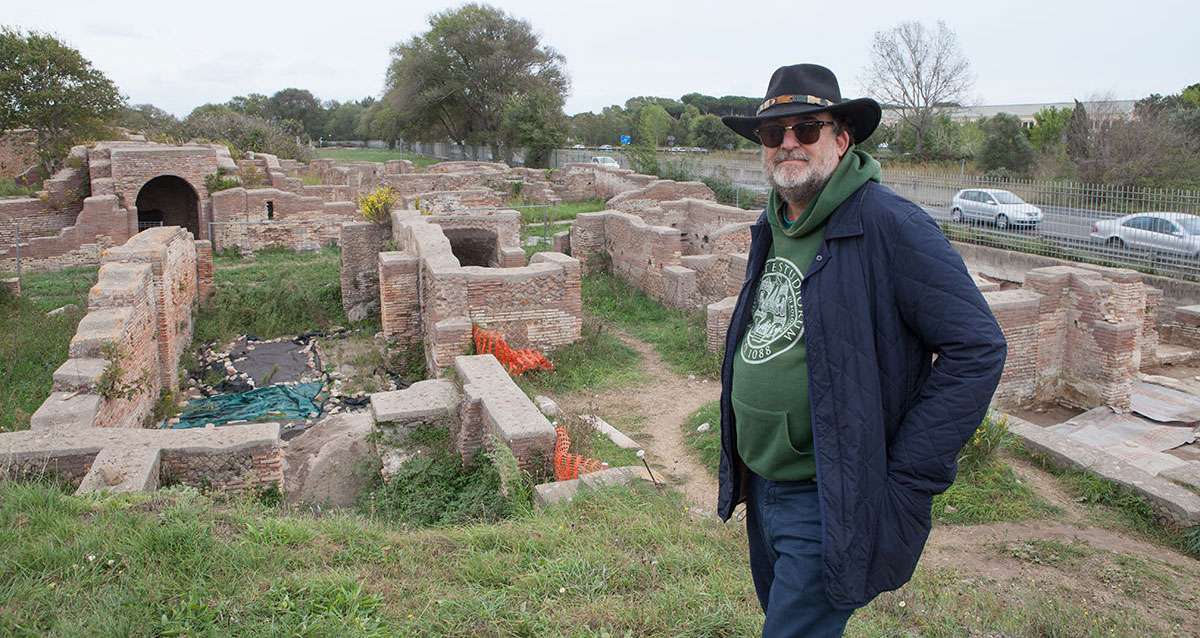 Professor Massimiliano David on the site of the Ostia Marina project
Professor Massimiliano David on the site of the Ostia Marina project
An interview with professor Massimiliano David
In 2007 the Dipartimento di Storia e Civiltà dell’Università di Bologna started an archaeological research project in Ostia with a dual goal: research of Ostia during late Roman times and provide an opportunity for young archaeology students to learn their future profession in practice with the aid of the stratigraphic method. As excavation site a hardly known area was chosen on the outer west border of Ostia, between the late-republican wall and the sea. After mapping the territory and an extensive geophysical investigation the first excavation campaign could start in 2009. The Ostia Marina project was born. About this project we had an interview with the head of the project, Professor Massimiliano David from the university of Bologna.
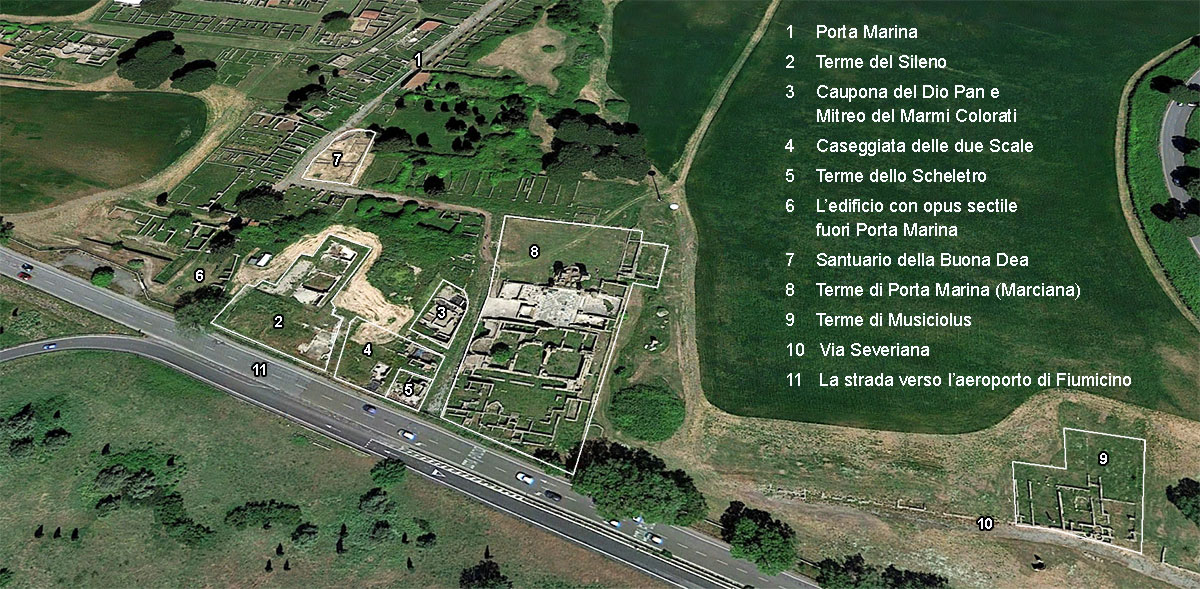
Professor, why is it called Ostia Marina project?
Ostia Marina project is the name chosen by the University of Bologna to describe our archaeological mission in Ostia, especially in the district called "fuori Porta Marina" (outside the Sea Gate). This part of the city is one of the most interesting districts of the antique city and has thus been called for ages because the district is located outside the walls and could only be entered by leaving the town via the Porta Marina.
What kind of project is the Progetto Ostia Marina?
What we really do is documenting our findings, trying to understand all objects and thereby enabling ourselves to tell the story of this part of the city outside the walls. Furthermore it tells us also something about the history of Ostia in general. The evolution of this district is the theme of our investigation. We are researching particularly Ostia in late Roman times. We took this as a starting point because that period is one of the less well-known parts of Ostian history. In earlier times historians thought life in Ostia had ended at the beginning of the fifth century AD. Today little by little we learn that part of history which otherwise, thanks to the old fashioned methods we still used a couple of years ago, never had been brought to light.
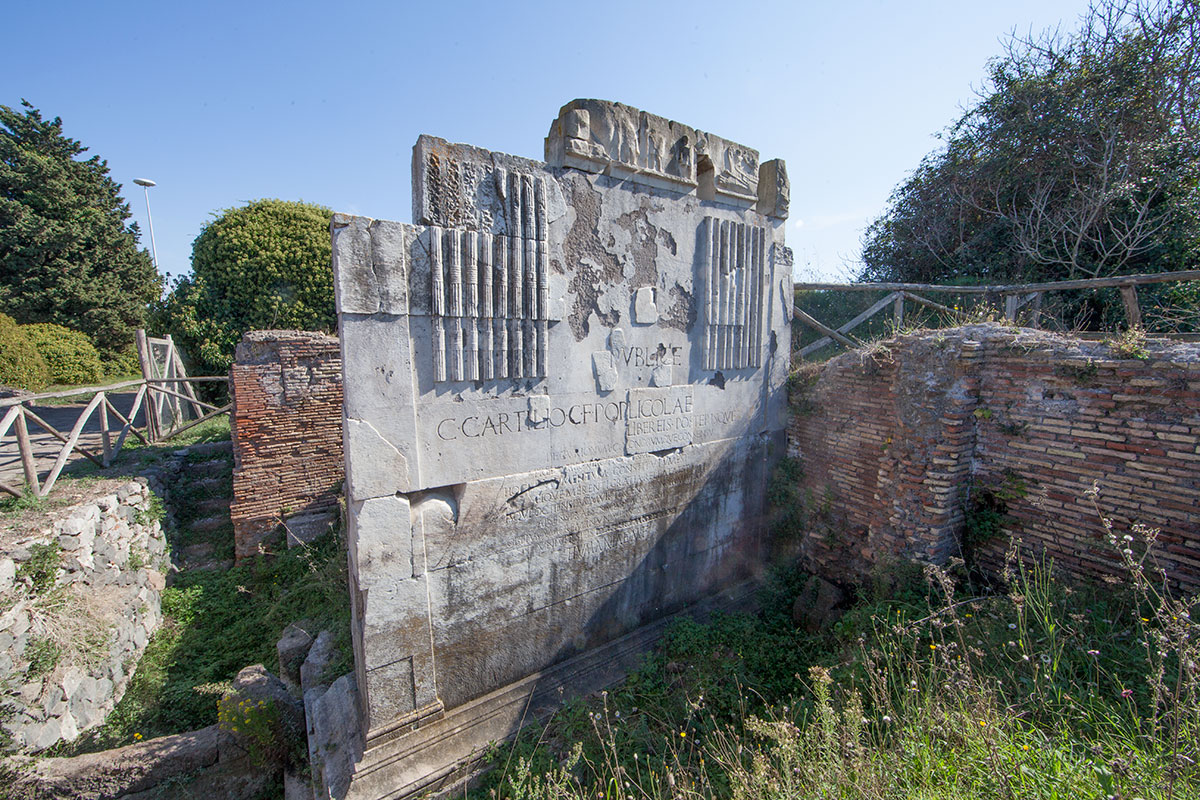
Wasn’t this part of the city outside the walls mostly used as a necropolis?
The presence of tombs shows that this district originally was used as a necropolis indeed, but also for other activities. There were sanctuaries, from which the most well-known probably is the Santuarium della Bona Dea (the Sanctuary of the Good Goddess). There were also commercial activities and villae, or better, prestigious residences between the city and the sea.
You talked about new, modern techniques. Can you tell us more?
Yes, we have experimented with all kinds of techniques in the field of archaeology. Nowadays these new techniques are commonly in use but that wasn’t the case when we started. Hardly anyone used these for documentation. We bring them into action on our site with several kinds of instruments.
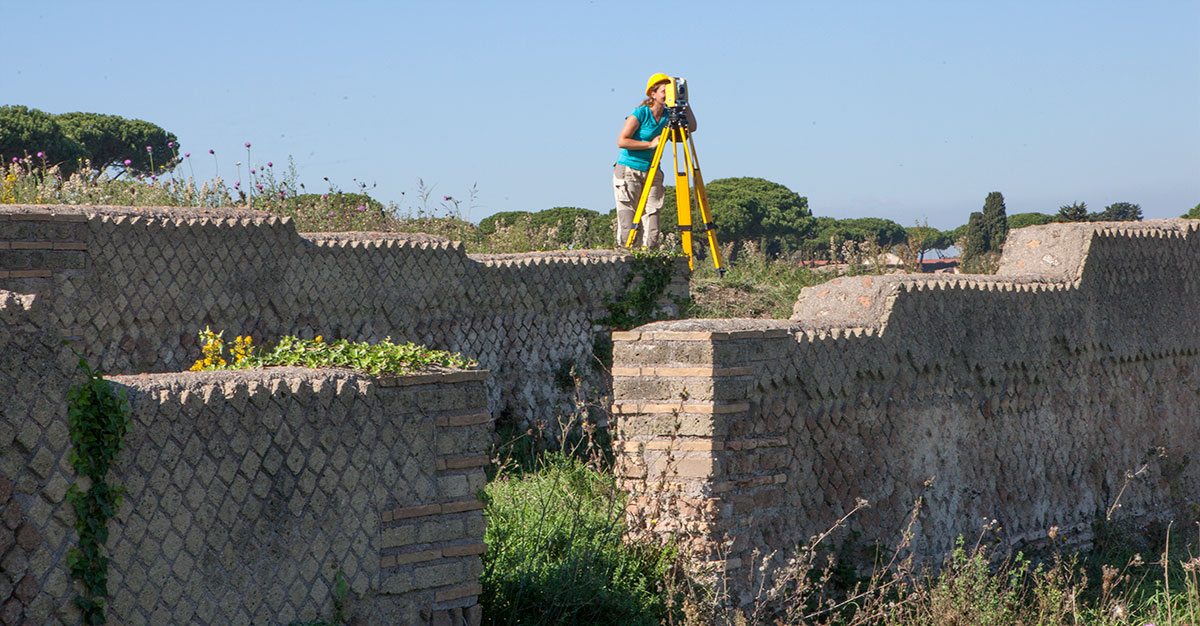
Instruments like laser scanners for instance. Thanks to the cooperation ENEA from Bologna we were able to investigate the Mithras Sanctuary with a laser scanner. Especially the spelaeum (cave) of Mithras. We worked this whole season with the traditional theodolites which provide us with 3D pictures of the various structures. Today those instruments have become indispensable for the documentation of archaeological research. One may call the Ostia Marina project a techno-stratigraphic excavation. Students not only learn how to excavate but also how to use those innovative instruments, with which they can document a project as never before.
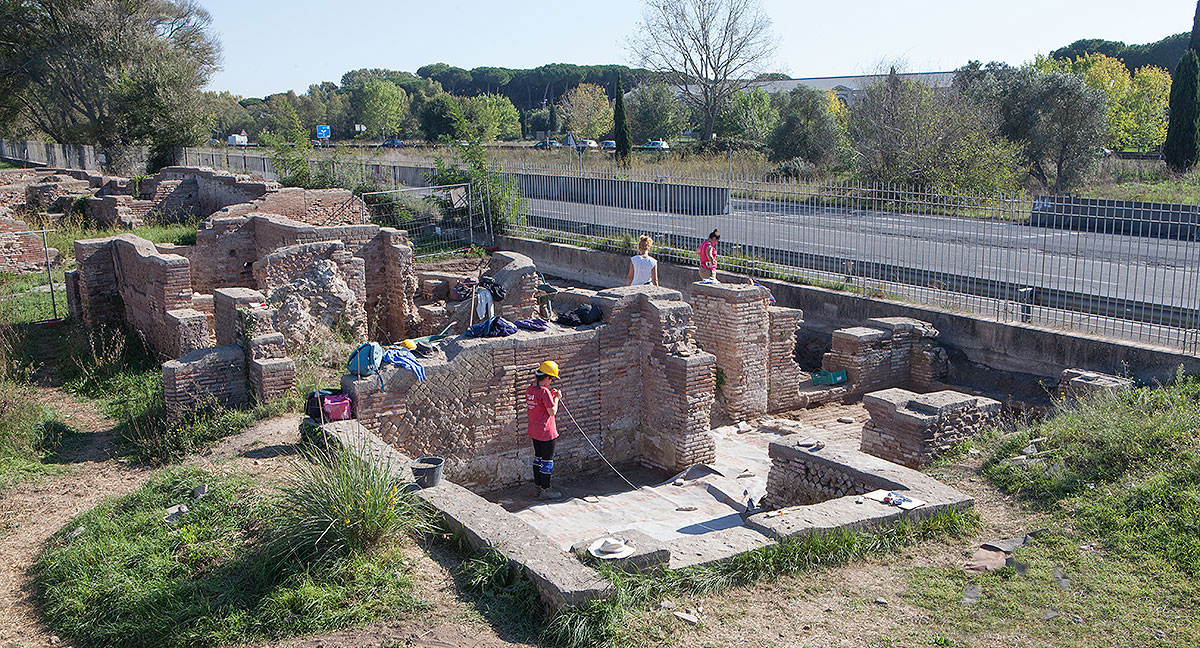 Work in progress along the road to the airport of Fiumicino
Work in progress along the road to the airport of Fiumicino
The project borders the road to the airport of Fiumicino. Is there still a part of the district under that road?
The highway to Fiumicino was situated more or less on the same place as the old Via Severiana, the Roman road connecting almost all the dwellings along the coast of Latium. This old coastal road has been located. The road existed probably already in the first century AD as a path but was improved and used intensively during the reign of Septimius Severus. That’s why it is called the Via Severiana. Across the Via Severiana the sea began, one of the two raisons d'être of Ostia, the river Tiber and the sea. Unfortunately today cars are raging over that road to the airport of Fiumicino or to Rome. This deprives us of the opportunity to properly investigate another important aspect of our mission: the relation between the city and the sea. We are not only interested in the inhabited part of the city-quarter outside the walls but also in the natural landscape.
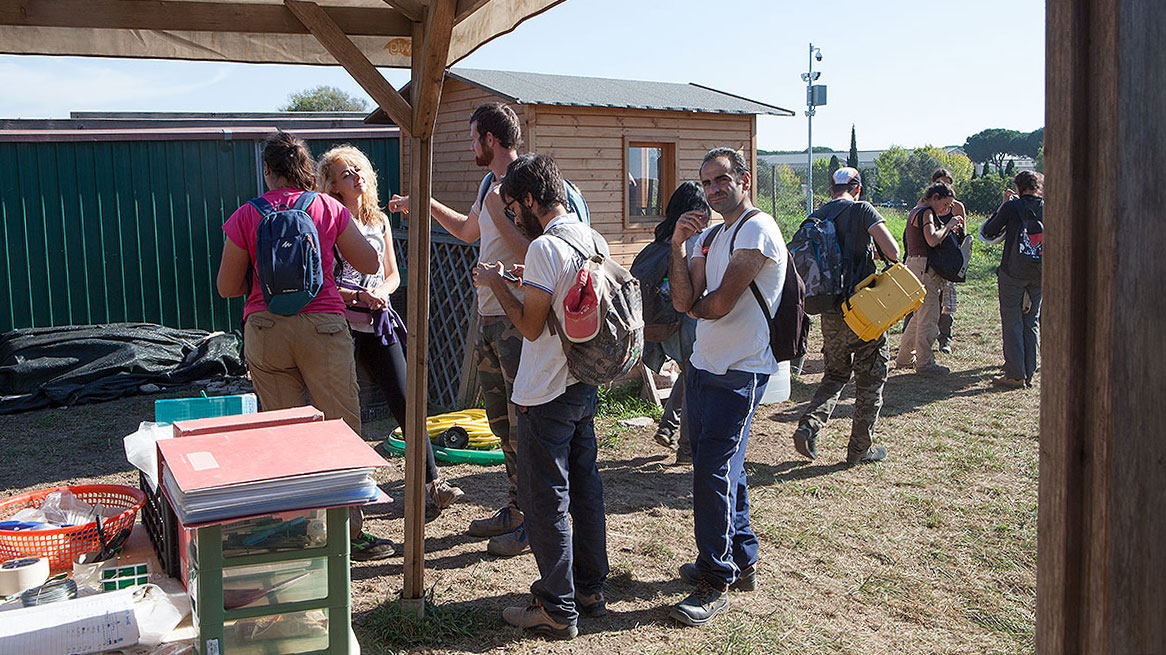
Where are your students from?
Every year we invite students from all over the world via internet to participate in the annual campaigns of our project. The registration is open for all academic archaeology students. We have had students from France, Belgium, Germany, the USA, Spain, Greece, Croatia, Switzerland, Russia, Slovakia and other countries. None from The Netherlands so far, but we'd love to have them. This year for the first time there were more Italian than foreign students. In my opinion it has also something to do with the financial crisis in Europe.
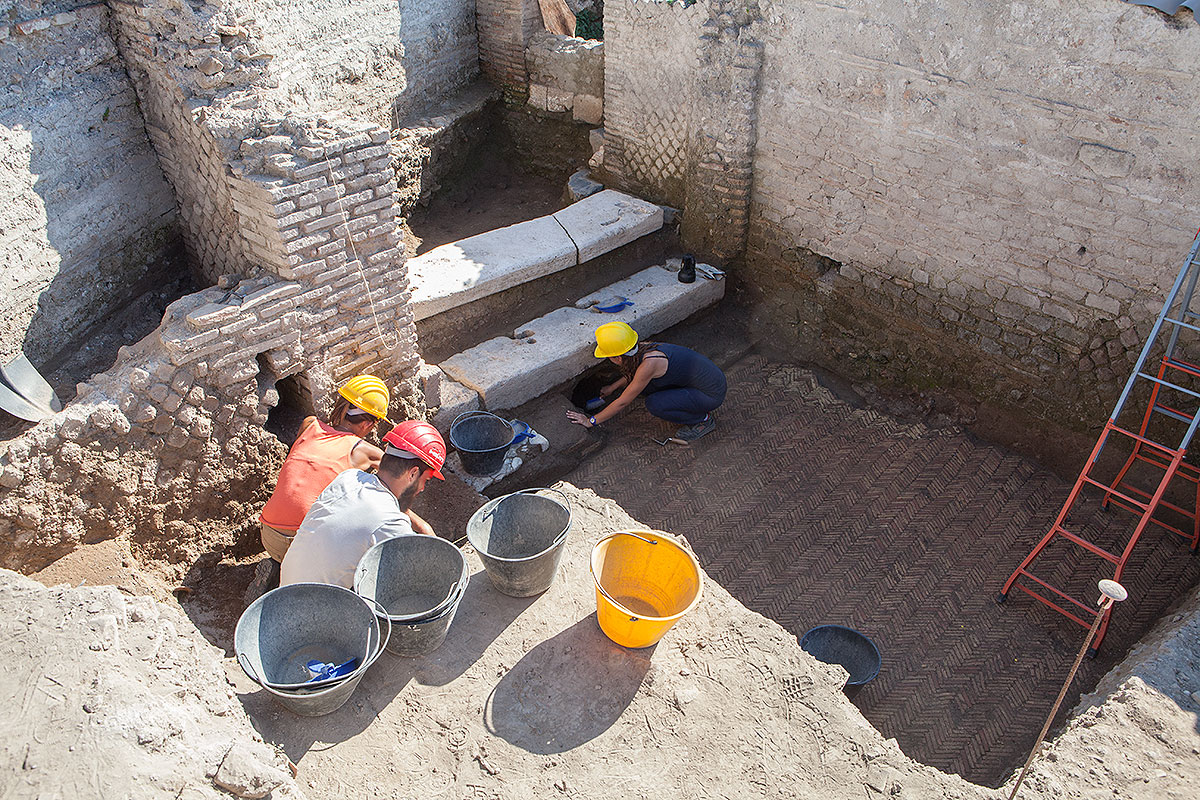
Are they all first year students?
Some are. Our first task is to learn them how to excavate, but we also teach students with experience, those who have excavated already and come to join us. As a university we have to do research and teaching at the same time. That’s why it’s really a mixed company. But the students with experience, those who have been excavating already are a minority. During the past years we have taught hundreds of students who had their first experience here. Every year we have an average of registrations between 150 and 250. After selection, 20 to 30 people per shift are left. These students have to be relieved by other students. Normally we are working in three or four shifts.
How do you start with students without experience?
We start with preliminary lectures. The first day we visit Ostia with an introductory lecture. Over the past years, in cooperation with the Italian and foreign culture institutes, we have organised about 60 archaeological visits at the most important sites in Latium and Rome. Archaeology is not only excavating. But after all they are archaeology students so at least they know what an archaeological excavation is all about.
Of course, but they learned it in theory not in practice!
For most of them, that’s true. They learn the ‘physical knowledge’ here on site. We start by teaching them the fundamentals and later on the delicate chirurgical precision work. After 15 days they leave the site with a unique experience and a huge awareness. Often we receive letters of thanks from students because they are very grateful for the help obtained by learning the activities they maybe once need in their future job.
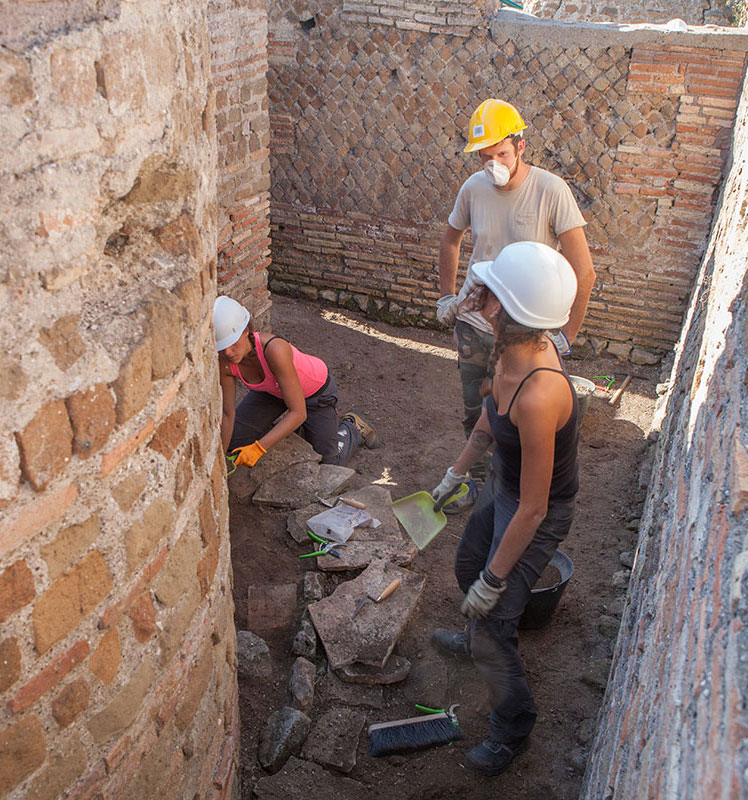
Where do they live when they work at Ostia?
The students from Bologna stay in apartments specially reserved for them. Furthermore we have a central mission office for our staff just outside the centre of Ostia. Students who are not from the university of Bologna, and there are many, have to look for their own accommodation. Most of the time they find something in Ostia Lido, in Rome or in one of the many villages outside Ostia. Acilia for instance is a village where one can easily find places for hire.
Are there specific difficulties organising a project like this?
Of course. The organisation of an ambitious project like this is, as one learns over and over again, not simple. I have to say that after eleven years of work we have collected a group of persons knowing each other and working together like a well-oiled machine. A machine that continues to work even when people are being replaced. And that happens all the time when new, young students enter the group. The machine rolls on, smoothly and functionally. By the way, this team is the same team that very successfully started this year on a project at Civitavecchia. This shows how the same team can also be implemented easily on other sites.
What did you find so far?
Over the past years we found and investigated the Baths of Silenus, the large apartment building with the two stairs, the Baths with the Wkeleton, the Caupona (bar) of the god Pan and the Mithras sanctuary with the coloured marble. This year we added the investigation of the Baths of Marciana (Terme della Porta Marina) and the Baths of Musiciolus. Baths are amongst the most important aspects of the Ostia Marina project. We brought to light very important data concerning the bathing culture of Ostia as well as the bathing culture of the Roman world in general. Finally I woyuld like to thank the Parco Archeologico di Ostia Antica, because without their help and continued support we could not have achieved anything.
(Click here for a more technical article about the Ostia Marina project)
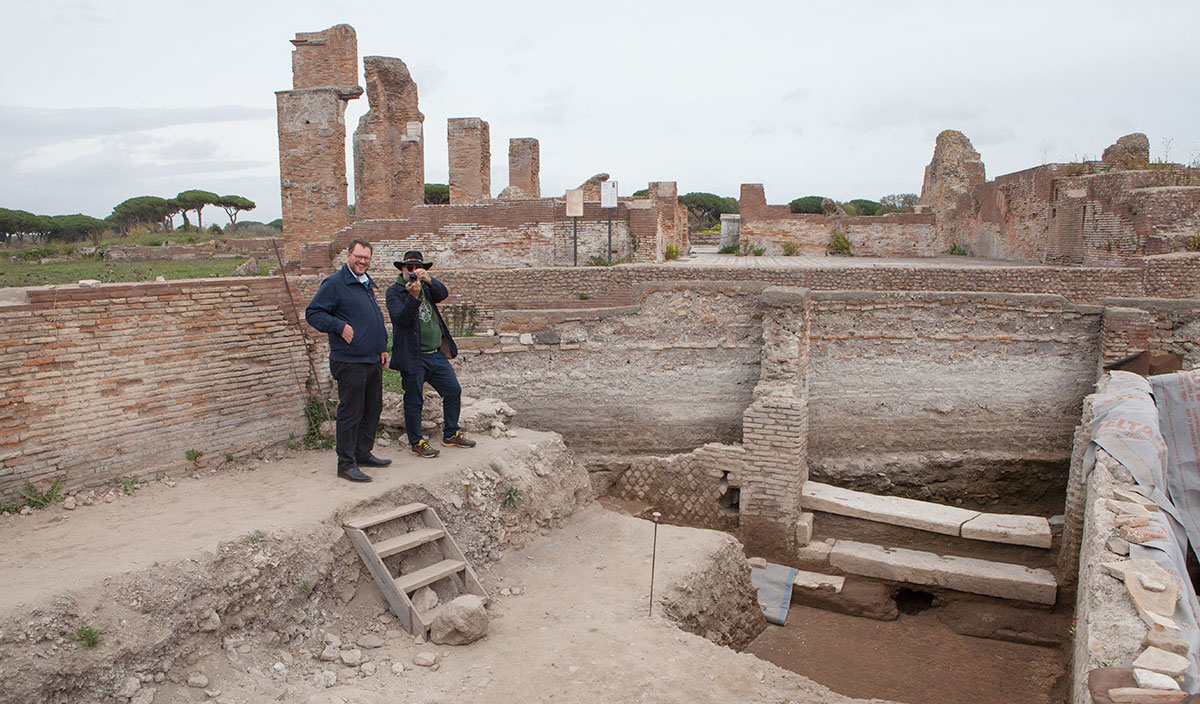 Professor Massimiliano David together with the chairman of Roman Ports, Lukas Burgering on site
Professor Massimiliano David together with the chairman of Roman Ports, Lukas Burgering on site






 We are committed to providing versions of our articles and interviews in several languages, but our first language is English.
We are committed to providing versions of our articles and interviews in several languages, but our first language is English.